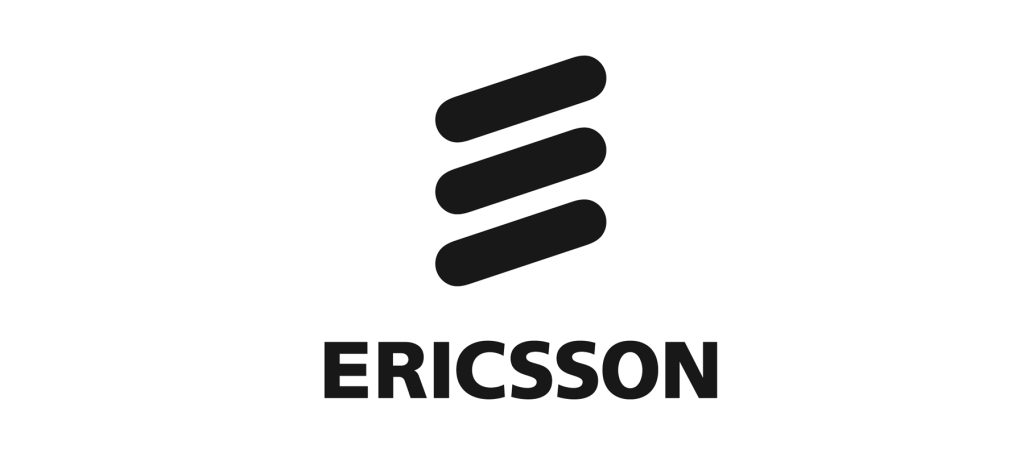When it comes to 5G, Canada is at a turning point. 5G networks are expanding as customers are demand more from their digital experiences. But Canadian communications service providers (CSPs) face the dual challenge of modernizing their aging, legacy infrastructure while also preparing for the next wave of innovation.
Nine out of 10 Canadian businesses believe connectivity is key to advancing innovation and competitiveness, according to Ericsson’s annual State of Enterprise Connectivity report for Canada. And they’re looking to AI and IoT (the Internet of Things) to help them navigate an unpredictable business environment, which underscores the need for business investment in advanced network infrastructure.
The majority (90 per cent) of Canadian businesses agree that more secure, reliable and high-performing networks such as 5G will help to position the country as a world-class industrial and technology leader. Canadians consumers and businesses alike expect seamless connectivity — from smart homes and autonomous vehicles to remote health care.
As a result, the telecommunications industry is under pressure to balance performance with sustainability, security and cost-efficiency. Each of Canada’s CSPs are looking to lower their capital costs while remaining competitive and delivering more to customers. That’s why network modernization is no longer optional — it is an imperative. And the choices Canadian CSPs make now will define their ability to compete in a hyper-connected world.
The challenges ahead for Canadian CSPs
Canadian CSPs operate some of the most advanced networks globally, but they also face pressing challenges. For example, many networks still rely on outdated hardware and fragmented systems that are costly to maintain and slow to evolve. At the same time, operators are balancing heavy spectrum investments with the need to deliver affordable services to consumers.
New entrants and global over-the-top players are reshaping consumer behaviour and expectations, driving a more competitive environment. And Canada’s commitments to net-zero emissions also demand energy-efficient infrastructure at scale.
The vast majority of Canadians are covered by 4G LTE and, while 5G hasn’t yet overtaken 4G, it’s rapidly growing. While major carriers are focused on nationwide 5G coverage, smaller operators and regional players tend to offer a more localized 5G footprint. But there are several challenges in closing the remaining 4G/5G coverage gaps in Canada, from geography to technical limits — even weather.
Vast areas of Canada are sparsely populated; there’s also rugged terrain, from mountains and tundra to the Canadian Shield, as well as extreme weather. That means building and maintaining towers, fibre backhaul and power in these areas is costly and technically difficult.
As a result, per-user costs are very high compared with urban areas. Carriers tend to prioritize investments where revenue per site is highest. In low-population regions, the expected average revenue per user is low, so private operators may not be able to justify the capital and operating expenses without subsidies or guaranteed demand.
Modern 4G/5G sites need robust backhaul (such as fibre or high-capacity microwave) as well as reliable power. Extending fibre to remote towers is expensive, while microwave links can be capacity-limited or affected by terrain and weather. Off-grid power solutions add complexity and cost.
Low-band spectrum offers better range, but it’s regulated (and scarce). Mid-band offers capacity but less range and requires denser sites. High-band (mmWave) is high speed but extremely short range and poor propagation. That means effective coverage in rural and remote areas usually requires low-band holdings or many more sites.
Obtaining rights-of-way, municipal approvals and environmental or Indigenous consultation requirements can also delay or block deployments. At the same time, co-ordination with local governments and communities is often slow and complex, which can slow efforts to close the remaining 4G/5G coverage gaps across Canada.
A global proof point
“Canada has unique challenges — vast geography, diverse demographics and rising consumer expectations — but the principles of modernization are universal,” says Nishant Grover, Ericsson Canada’s new chief executive officer. “For Canada, my focus is clear: accelerate the modernization journey of our CSP partners.”
Grover is uniquely suited to this role, coming from AT&T where he was part of the team that worked on AT&T’s modernization efforts. “That experience underscored for me what is required to drive large-scale transformation: trust, collaboration and a clear focus on outcomes that matter to customers.”
By leveraging global proof points like AT&T while tailoring approaches to the Canadian context, he says Canada’s networks could be among the very best in the world.
A few years ago, Ericsson signed one of the largest network modernization agreements in its history: a $14 billion partnership with AT&T to re-architect one of the world’s largest telecom networks. This initiative wasn’t about incremental upgrades — it was about building a future-ready, energy-efficient and secure foundation for one of the world’s largest telecom networks.
The collaborative initiative included software features that led to annual savings of $28 million by improving energy efficiency. By modernizing its infrastructure, AT&T is now delivering faster connectivity, stronger network resilience and significant energy savings. It’s also better prepared for the demands of the next decade, from standalone 5G to emerging 6G innovations.
“This case study has become a benchmark for what is possible when modernization is approached not as a cost but as a strategic investment,” says Grover, adding that for Canadian CSPs, the lessons are both relevant and urgent.
Why modernization can’t wait
Without bold modernization moves, CSPs risk falling behind both consumer expectations and global competitors. Market, technology, competitive and regulatory forces are converging rapidly — and failing to act risks loss of revenue, relevance and resilience.
“Modernization isn’t just about upgrading technology — it’s about securing performance, efficiency and long-term competitiveness in the next generation of networks,” says Grover.
Mobile data demand and operational pressures are accelerating faster than legacy networks can handle. According to the Ericsson Mobility Report, North American mobile data traffic more than doubled between 2019 and 2024 — and is projected to grow at a 17 per cent compound annual growth rate through 2030.
At the same time, energy costs represent 15 per cent to 20 per cent of a typical telco’s operating expenses, making efficiency a critical business lever. Modernizing with multi-band radios, Open RAN/Cloud RAN and AI-driven automation — as demonstrated with AT&T — can deliver 20 per cent to 25 per cent power savings, greater network capacity and lower operational complexity.
Modernization is also about rethinking the very foundation of the network, such as protecting Canadian consumers and enterprises against evolving cyber threats; delivering reliable, low-latency connectivity for anything from augmented reality to Industry 4.0; and aligning with national climate goals while reducing operational costs.
“This will ensure Canada is future ready, building infrastructure capable of supporting 5G evolution and paving the way for 6G,” says Grover.
Lessons from AT&T for Canada
The path to modernization includes identifying legacy systems that create cost and complexity, prioritizing security and energy-efficiency, and engaging in strategic partnerships by leveraging global expertise tailored to Canadian realities.
Canadian CSPs can extract practical, strategic and cautionary lessons from AT&T’s multi-year modernization journey. “Partnership is critical,” says Grover. “Modernization is too complex for CSPs to undertake alone.”
AT&T invested in reusable platforms, such as Network Cloud, rather than using bespoke point solutions. Grover recommends that Canadian operators favour modular, cloud-native building blocks that can be composed for multiple services rather than bespoke integrations for each use case.
And, like AT&T, they may want to think beyond technology to consider business outcomes: reduced energy consumption, faster time-to-market and an improved customer experience. Modernization is about investing for the long-term; it’s not a short-term fix, but a foundation for decades of competitiveness.
There are also pitfalls to avoid. Based on AT&T’s experience, Canadian CSPs should avoid trying to rip-and-replace too quickly (a phased co-existence helps to minimize customer risk) and avoid over-customization of open platforms, which erodes portability. They shouldn’t ignore commercial models, either — technology wins need matching billing, SLAs (service level agreements) and partner channels.
Concrete first steps for Canadian CSPs inspired by AT&T include launching a cloud-native network platform pilot (core and edge) with clear KPIs; implementing unified telemetry and a small automation backlog for high-value trouble tickets; running private 5G and Multi-access Edge Computing (MEC) pilots with two to three enterprise customers and hyperscaler partners; building a workforce reskilling program; and appointing a product leader for edge and enterprise offers.
Accelerating the modernization journey
Working with a partner can help to accelerate those modernization efforts. “A key strength of Ericsson in supporting Canadian CSPs’ modernization journey is our proven expertise in designing and deploying high-performance networks,” says Grover.
Ericsson has modernized some of the world’s largest networks, from AT&T in the U.S. to leading operators in Europe and Asia. Its portfolio spans radio access, transport and cloud-native core solutions, all designed for efficiency and resilience.
Its solutions are optimized for delivering ultra-reliable, low-latency connectivity with high throughput and capacity, which is critical for 5G applications such as enhanced mobile broadband, massive IoT and mission-critical communications.
“With a strong local presence, we’re doubling down on our investment in Canada’s future,” says Grover. “Our message is simple: Canada does not need to choose between performance, security and sustainability. With the right modernization strategy, it can achieve all three.”
For Canada, Ericsson’s strengths in high-performance networks, edge and transport planning, low-band coverage strategies and managed service models help address geographic and economic hurdles, according to Grover.
These strengths also help to enable cost-efficient rural coverage (FWA plus private networks plus satellite integration), speeding enterprise monetization in resource sectors and providing a pragmatic O-RAN/Cloud RAN migration path where appropriate.
By partnering with governments, CSPs and local ecosystems, Grover says Ericsson can help accelerate rural coverage, support sovereign data handling models, enable industry-specific services (such as private 5G and MEC) and deliver measurable social and economic benefits — making modernization not just a commercial opportunity, but a public good.
Redefining the best network for Canada
Modernization isn’t just a technical project — it’s a national priority. Trusted, high-performing and energy-efficient networks will help to power Canada’s economy, connect communities and enable innovation across industries. And Canada can lead in the 5G/6G era with the right modernization choices.
Ericsson’s State of Enterprise Connectivity report found that Canadian companies are already leveraging 5G to maximize their business for production efficiency, customer experience, enhancing scalability and reliability/resilience. But they also believe 5G connectivity and next-generation technologies, such as AI, have a symbiotic relationship. And almost nine of 10 (87 per cent) believe 5G is critical to optimizing the use of AI within the workplace.
“At Ericsson, we’re committed to advancing Canada’s digital agenda as a major partner in the Canadian innovation landscape, investing in the development of turning point technologies like 5G Advanced, 6G, AI, Cloud RAN and Core Network, as well as fostering world-class Canadian talent,” says Grover. “Our sustainability efforts span across our customer base as we work directly with Canadian providers to meet their net-zero targets as well as our own.”



